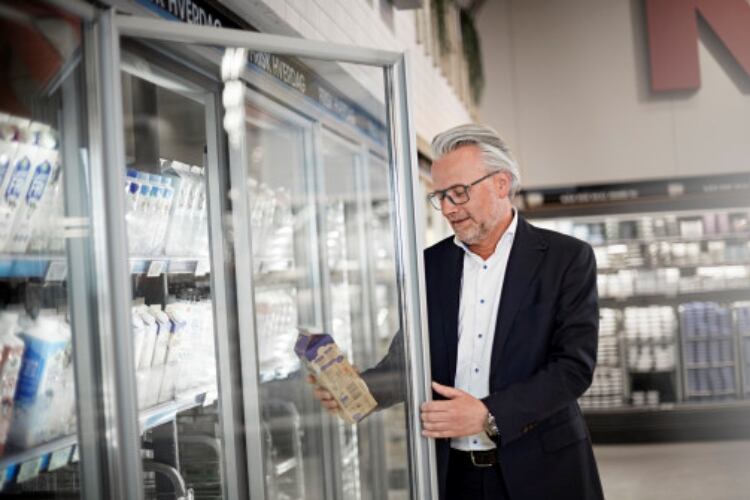“We want to help people live a more sustainable life as well as feel good about what’s in their fridge. Fresh milk and yogurts are enjoyed on a daily basis in most households in our main markets and are also key to our retail customers. That’s why these items topped our list of packaging to improve from a sustainability perspective and our pan-European presence enables us to leverage our scale and impact several markets simultaneously,” says Arla’s head of Europe, Peter Giørtz-Carlsen, who can also be heard talking about the initiative in the Dairy Dialog podcast that will air on Friday, May 10.
It is the first big move in Arla’s new sustainable packaging strategy. It is targeting a CO2 reduction of 30% by 2030, initially committing to reduce emissions from its packaging by approximately 8,000 tonnes of CO2 every year until then. The ultimate aim is for its entire portfolio to be carbon net zero by 2050, in line with its overall climate ambition to become carbon net zero by 2050, announced last month.
The new packaging will be available for consumers in Arla’s six main European markets - Sweden, Denmark, Finland, the Netherlands, Germany and the UK.
The switch from fossil-based plastic to bio-based plastic derived from sugar cane or forest waste for the 600 million Arla milk cartons makes them 100% renewable. They also contribute 25% less carbon dioxide into the atmosphere compared to their fossil-based plastic predecessors.
For the yogurt pots, the move to recyclable plastic means that these can be given a second life if recycling systems in the markets enable this.
Back catalogue
“We have a rich back catalogue of moves that have made our packaging better for the environment over the years. But no doubt, this year’s conversion of more than one billion packaging items is one of our biggest ever. Coupled with some other smaller initiatives, it means we will hit our CO2 savings target for packaging for 2019. But we have to deliver every year, so we are already developing plans for next year’s reduction,” Giørtz-Carlsen said.
Past initiatives have included weight reductions, switching to bio-based plastics, incorporating recycled materials and replacing greenhouse gas intensive materials. Since 2005, Arla has reduced the CO2 impact of its packaging by 25%, equating to 123,000 tonnes of CO2 being diverted from the atmosphere.
Examples include:
- Taking 7,500 tonnes of plastic out of milk bottles in the UK and them now containing up to 30% recycled HDPE plastic (bottles out of Aylesbury dairy in the UK contain up to 40%)
- The clear plastic lids on crème fraiche and on-the-go pots now contain 85% recycled PET, lowering climate impact by approximately 70%
Making packaging more sustainable comes with many dilemmas, for example, it has to protect food, while maintaining its quality and freshness to avoid food waste. At the same time, it relies on technological developments, material availability and the systems being in place to enable a more circular flow of plastic in society.
“Over 90% of consumers think packaging should be designed to ease recycling and they want to be able to do so in their local recycling systems. This has been a key driver of these initiatives. Currently around 90% of our packaging is possible to recycle in one of our core markets and we want to make all our packaging possible to recycle and feasible to do so in all our core markets by 2025. We are dependent on the recycling systems in markets being fully developed and when they are, we’re preparing our packaging to be ready,” Giørtz-Carlsen concluded.

